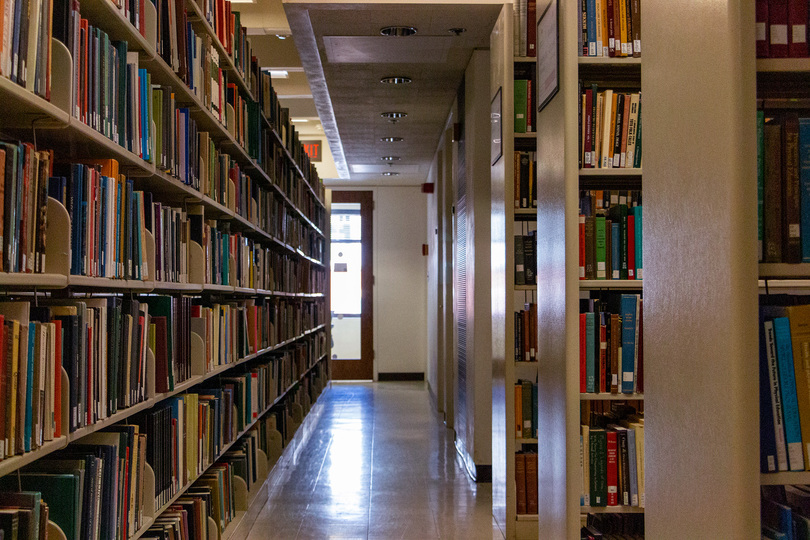SU Libraries’ new read-and-publish agreements expand access to publications

New read-and-publish agreements in Syracuse University's libraries allow SU SU-affiliated researchers to instantly make their work open-access and alleviate article processing charges usually required of researchers publishing work. Dylan Mohr, SU’s open scholarship librarian, said the new agreements will continue SU Libraries’ work to support the future of open-access publishing. Francis Tang | Senior Staff Writer
Get the latest Syracuse news delivered right to your inbox.
Subscribe to our newsletter here.
Syracuse University researchers will be able to publish work without article processing charges and make their publications available to the general public under SU Libraries’ five new read-and-publish agreements.
With the new agreements, SU-affiliated researchers are able to instantly make their work open-access, which gives the general public access to publications in addition to alleviating article processing charges usually required of researchers publishing work.
Alan Middleton, associate dean of research and scholarship in SU’s Department of Physics, said the new agreements will serve to simplify and increase efficiency for the open-access process. The new set of agreements more than doubles the number of SU’s read-and-publish deals.
All five of the new agreements are with journals that publish peer-reviewed scientific research articles, including John Wiley & Sons, Inc., The International Society for Optics and Photonics, Institute of Physics Publishing, The Plan Journal and The Company of Biologists. SU Libraries also has previous agreements with the American Chemical Society, Cambridge University Press, The Public Library of Science and The Royal Society.
At the beginning of the year, the White House Office of Science and Technology declared 2023 the “Year of Open Science,” and announced it would bar journals which publish federally-funded research from charging access fees. The office also plans to make scientific research from peer-reviewed publications free and publicly accessible by default.
But with the increase in accessibility for readers, journals aren’t able to rely on readers’ subscriptions as a source of income, said Dylan Mohr, SU’s open scholarship librarian.
Because many journals turn to authors for revenue, Mohr said, researchers trying to publish their work, including SU students, faculty and staff, now face a substantial rise in costs for processing charges.
“A lot of faculty are finding that the journals they’ve been publishing in for years are suddenly asking them to pay fees,” he said.
The new open-access agreements at SU will help to mitigate these high costs by reappropriating the money that previously paid for readers’ subscriptions to academic journals, Mohr said.

Stephanie Zaso | Digital Design Director
For faculty members in STEM-related fields like physics or biology, who publish a large portion of the research produced at SU, open-access is especially integral, he added.
“Sharing results in publications is the keystone of science,” Duncan Brown, vice president for research in the Department of Physics, wrote in an email statement. “Free and open sharing of ideas encourages innovation, ideas and inquiry.”
Along with the read-and-publish agreements, SU also supports the MIT Press and the University of Michigan Press, both of which are also prioritizing open-access book publishing. Through these partnerships, SU provides opportunities for students and faculty to publish in their programs, according to the SU Libraries website.
SU also has its own open-access repository, SURFACE, which collects and facilitates access to research done by students, faculty and staff at SU. The repository, which launched in 2010, features thousands of scholarly articles, books, journals, dissertations and theses.
“SU has a very strong commitment to open-access publishing, and the read-and-publish agreements are just one aspect of this,” Mohr said.
These new agreements, Mohr said, will continue SU Libraries’ work to support the future of open-access publishing. Brown said he’s looking to that future as a beacon for equity in education and information.
“Einstein built his General Theory of Relativity on the ideas he learned from the papers of Riemann, Ricci and others,” Brown said. “Open-access publishing democratizes science, bringing more equitable access and more possibilities for future research.”





